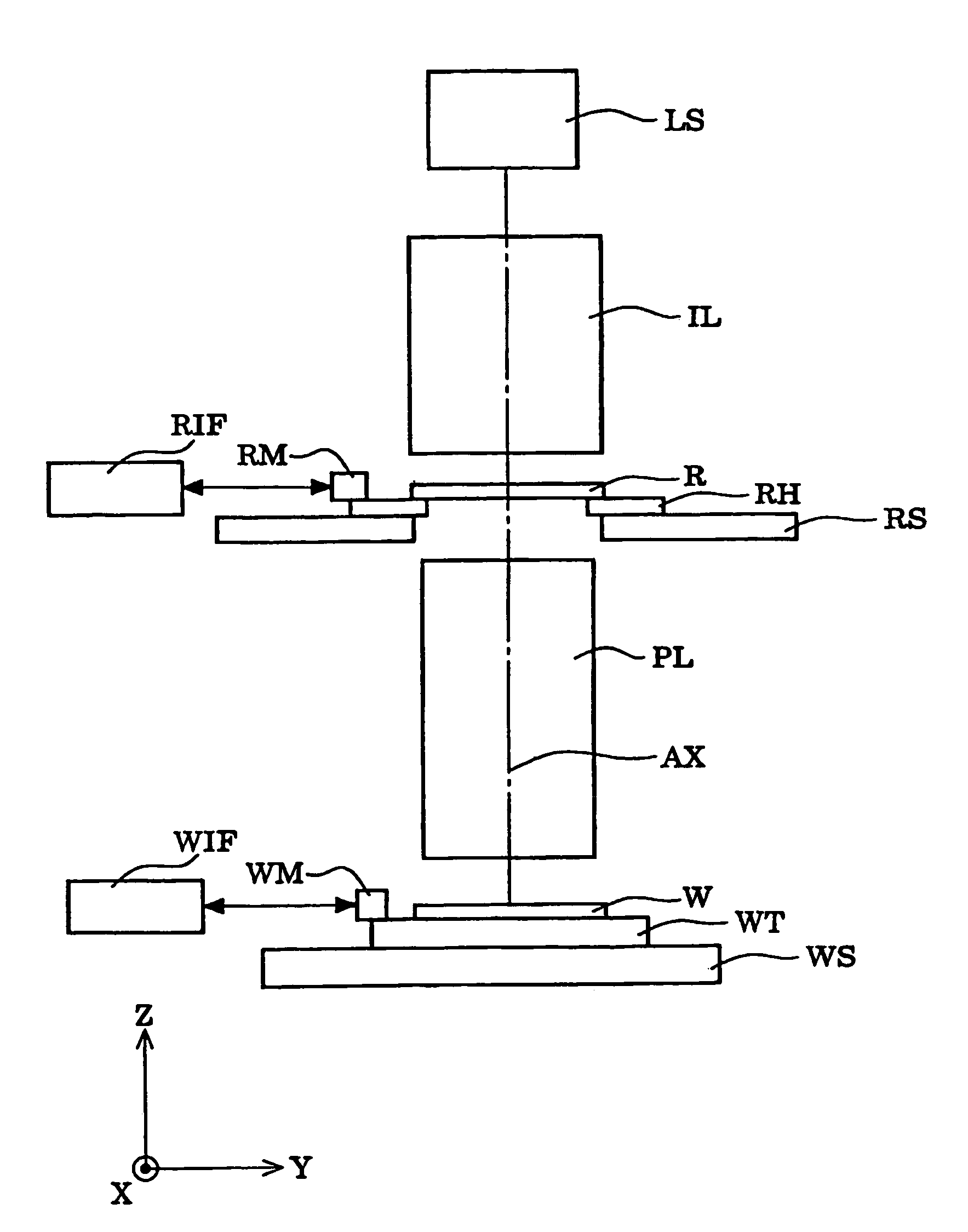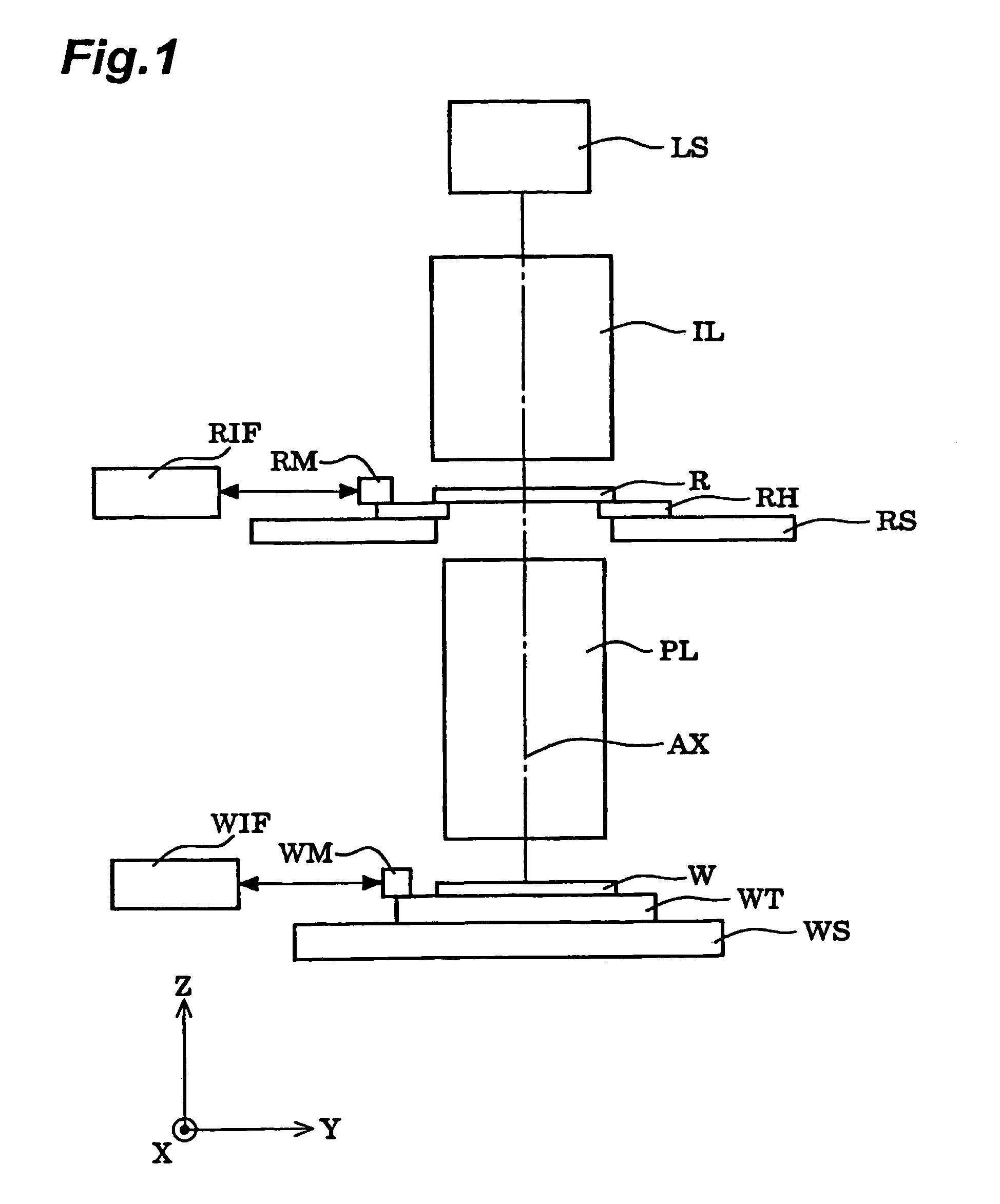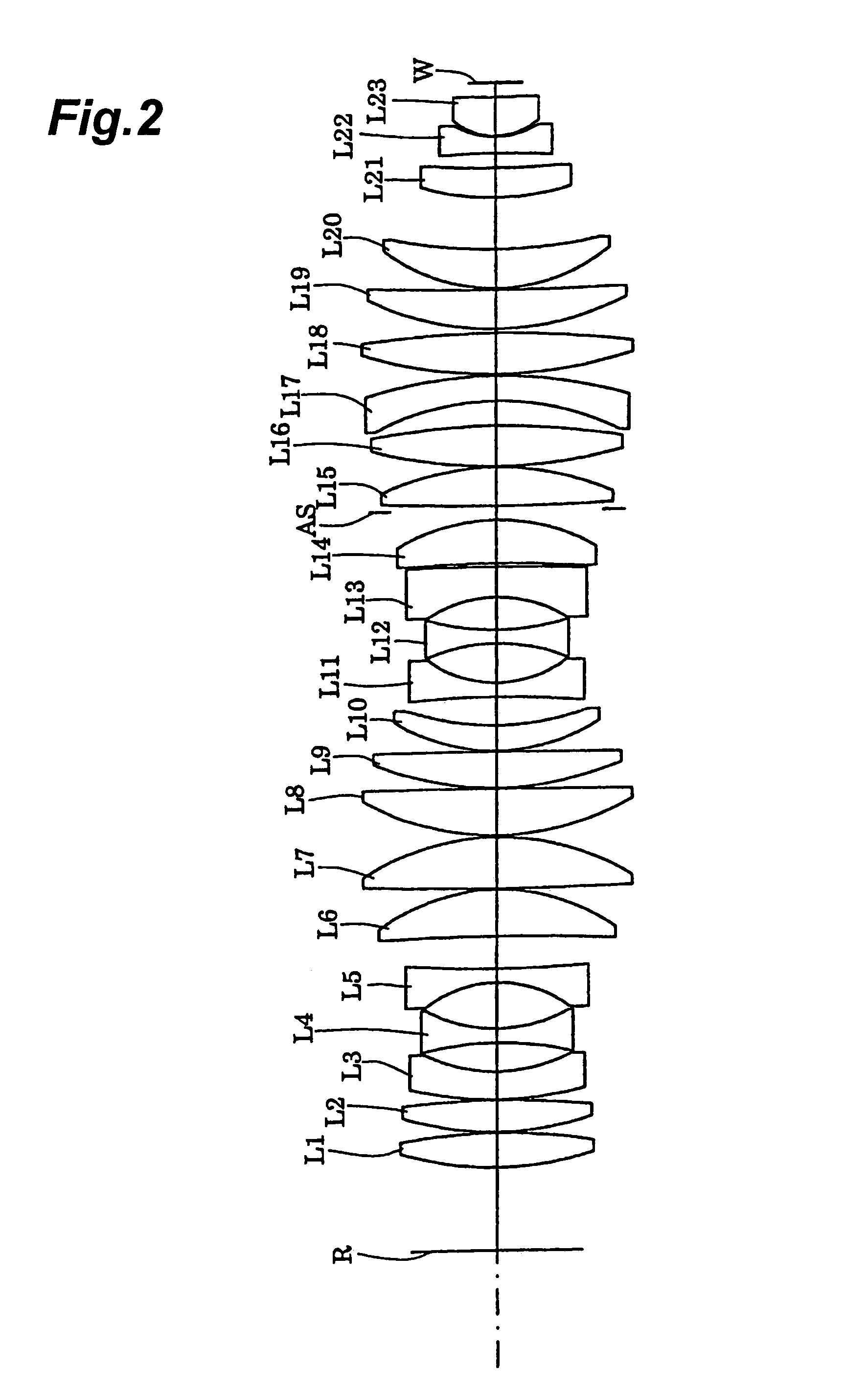Projection optical system, exposure apparatus, and device production method
- Summary
- Abstract
- Description
- Claims
- Application Information
AI Technical Summary
Benefits of technology
Problems solved by technology
Method used
Image
Examples
first embodiment
[First Embodiment]
[0072]FIG. 2 is a drawing showing the lens setup of the projection optical system according to the first embodiment. With reference to FIG. 2, the projection optical system PL of the first embodiment is comprised of the following lenses named in order from the reticle side: biconvex lens L1, biconvex lens L2, negative meniscus lens L3 with a concave surface of aspherical shape facing the wafer side, biconcave lens L4, biconcave lens L5, positive meniscus lens L6 with a concave surface facing the reticle side, biconvex lens L7, plano-convex lens L8 with the plane facing the wafer side, plano-convex lens L9 with the plane facing the wafer side, positive meniscus lens L10 with a concave surface of aspherical shape facing the wafer side, biconcave lens L11, biconcave lens L12 with a concave surface of aspherical shape facing the wafer side, negative meniscus lens L13 with a concave surface facing the reticle side, positive meniscus lens L14 with a concave surface facin...
second embodiment
[Second Embodiment]
[0078]FIG. 5 is a drawing showing the lens setup of the projection optical system according to the second embodiment. With reference to FIG. 5, the projection optical system PL of the second embodiment is comprised of the following lenses named in order from the reticle side: biconvex lens L1, biconvex lens L2, negative meniscus lens L3 with a concave surface of aspherical shape facing the wafer side, biconcave lens L4, biconcave lens L5 with a concave surface of aspherical shape facing the wafer side, negative meniscus lens L6 with a concave surface facing the reticle side, positive meniscus lens L7 with a concave surface facing the reticle side, positive meniscus lens L8 with a concave surface facing the reticle side, biconvex lens L9, positive meniscus lens L10 with a convex surface facing the reticle side, biconcave lens L11 with a concave surface of aspherical shape facing the wafer side, biconcave lens L12 with a concave surface of aspherical shape facing th...
third embodiment
[Third Embodiment]
[0084]FIG. 8 is a drawing showing the lens setup of the projection optical system according to the third embodiment. With reference to FIG. 8, the projection optical system PL of the third embodiment is comprised of the following lenses named in order from the reticle side: negative meniscus lens L1 with a convex surface facing the reticle side, a biconcave lens L2 with a concave surface of aspherical shape facing the reticle side, positive meniscus lens L3 with a concave surface facing the reticle side, positive meniscus lens L4 with a concave surface facing the reticle side, positive meniscus lens L5 with a convex surface facing the reticle side, biconvex lens L6, biconvex lens L7, negative meniscus lens L8 with a concave surface of aspherical shape facing the wafer side, negative meniscus lens L9 with a concave surface of aspherical shape facing the wafer side, biconcave lens L10 with a concave surface of aspherical shape facing the wafer side, biconcave lens L1...
PUM
 Login to view more
Login to view more Abstract
Description
Claims
Application Information
 Login to view more
Login to view more - R&D Engineer
- R&D Manager
- IP Professional
- Industry Leading Data Capabilities
- Powerful AI technology
- Patent DNA Extraction
Browse by: Latest US Patents, China's latest patents, Technical Efficacy Thesaurus, Application Domain, Technology Topic.
© 2024 PatSnap. All rights reserved.Legal|Privacy policy|Modern Slavery Act Transparency Statement|Sitemap



